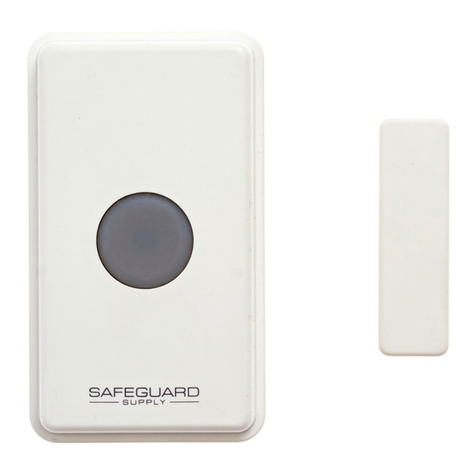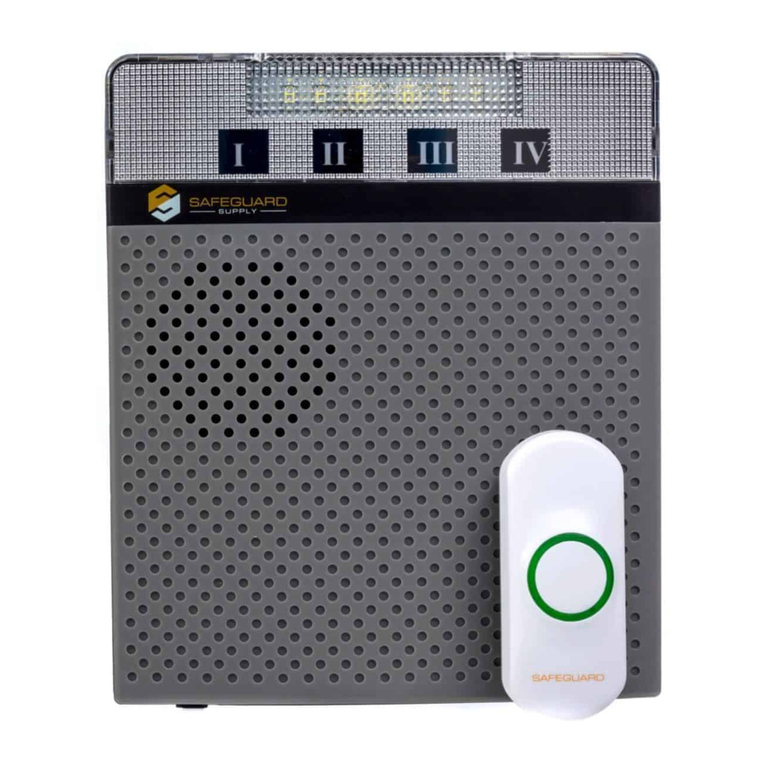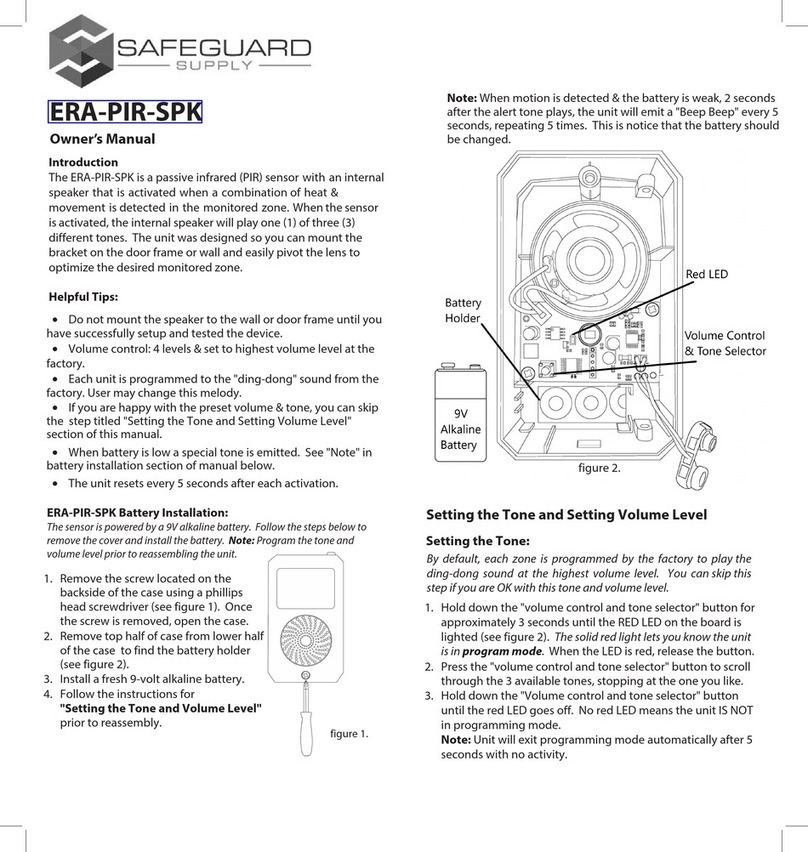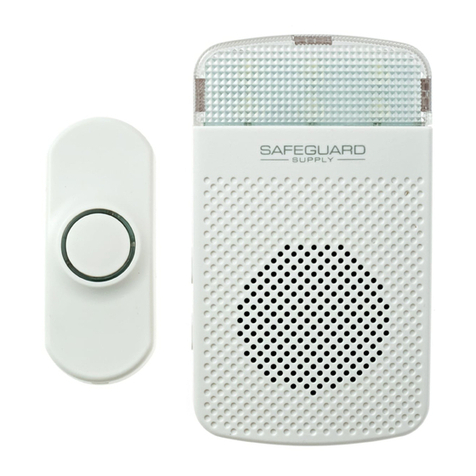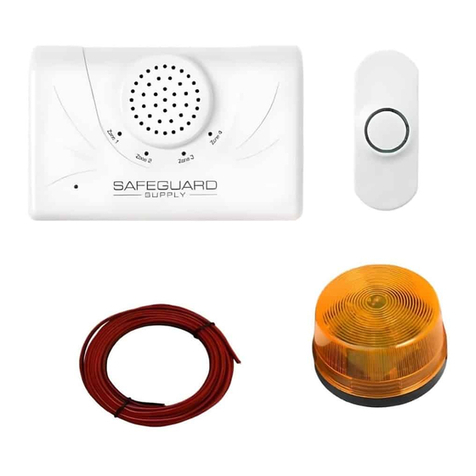The receiver has a red led light for each of the four zones. The lights can be set to
blink for every activation up to ten and then repeat or turn on once for ten seconds
when a signal is received.
Reminder Beep:
The receiver has a reminder beep that can be set to “beep” every 15 minutes after
a signal is received. The reminder can be set with the “A” button (Figure 1-10).
1. The reminder beep will only sound if the zone light is set to flash (see
previous section on Zone Lights).
2. To activate the reminder beep press and hold the “A” button for 2
seconds. You will hear one beep.
3. To deactivate the reminder beep press and hold the “A” button for two
seconds and you will hear two beeps. To cancel the reminder beep press the “A”
button for 0.5 seconds.
4. You can also use jumper “J2” (Figure 1-5) in the receiver to select which
zones will have the reminder beep. If the jumper covers both pins for a zone, that
zone will have the reminder beep. If the jumper is on only one pin, the zone will
not have the reminder beep.
Exit delay:
The receiver can be programmed to have a 5 minute exit delay where it will not
receive a signal from selected transmitters.
1. The jumper“J3”(Figure 1-6) can be used to determine which zone(s) you
would like to use with the exit delay. To use the exit delay set the jumper to cover
both pins for the desired zone(s).
2. To start the exit delay press the “B” button (Figure 1-9) for 0.5 seconds
and release. The green led will flash for 5 minutes and during this time no signals
will be received from the selected zones.
NOTE: Whenever a change is made to the jumpers or the dip switches, the receiver
must be turned “OFF” and then back “ON” to operate properly
Zone lights:
The receiver has a red led light for each of the four zones. The lights can be set to
blink for every activation up to ten and then repeat or turn on once for ten seconds
when a signal is received.
1. To have the leds flash once for ten seconds push the “C” button (Figure 1-
8) for 0.5 seconds and release. The four leds will flash once and the zone led will
turn on for ten seconds when a signal is received.
2. To have the zone led flash for each signal received (up to ten) and then
repeat, press the “C” but- ton for 0.5 seconds a second time and the four leds will
flash twice.
3. To reset the flashing leds press and hold the “C” button for 2 seconds.
The four leds will light for three seconds and the flashing will stop until the next
signal is received.
Frequency: 433.92 MHz Operating voltage: 12VDC
12 volt DC output current: 400 mA
maximum Relay rating: 24VDC at 3amp
UT-2500 Universal Transmitter
Introduction
The UT-2500 transmitter is compatible with the DCR-2500 receiver. The UT-2500
has several methods of activation. First, it has a push button that can be used as a
panic button or doorbell. The UT-2500 also has terminals for a normally open (N/O)
or normally closed (N/C) input. These inputs can be used with any detector
contacts. There is also a magnetic contact that can be used for doors or windows.
When the transmitter is activated, it will send a signal to the receiver which will
sound one of four different tones (Classical, Westminster Chime, Ding Dong, or
Whistle) for a few seconds, or activate the relay outputs.
Operation:
(Always test unit prior to installation)
1. Remove the four screws on the back of the case and open to find the
